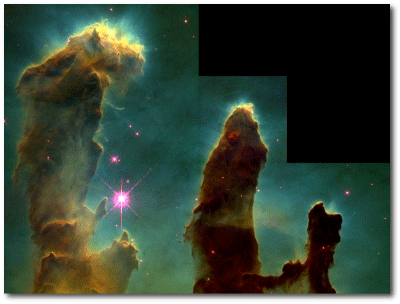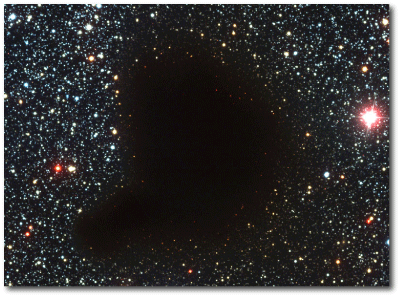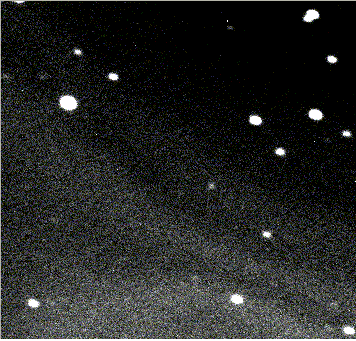
The HST photo of the photoevaporating molecular clouds of M16 is the iconic go-to image, but it’s always struck me as veering toward flash over substance. The “pillars of creation” name combines with the visual cues to create the illusion that you’re looking at something in an up-down gravitational field.
I think my favorite astronomical image is the not-quite-so-famous photo of Barnard 68. Here, one gets a far more immediate and accurate sense of what one is actually seeing. A cold, black self-gravitating cloud, looming in the foreground, blotting out the stars. It’s easy to imagine a sped-up film which depicts the cloud boiling and writhing with its internal turbulence.

There’s a certain undeniable menace to the dark cloud, and not without reason. If we rewind the tape by 4.54 billion years, all the material in our own solar system would have looked not unlike Barnard 68. If viewed in time-lapse, the pre-solar dark cloud would have collapsed from inside out upon itself, leading to the formation of the Sun, the planets, and eventually, a vanguard of five delicately engineered probes heading tentatively out into the galaxy. There would have indeed been cause for long-term concern…
Creepy undertones aside, Barnard 68 is a great slide to show during talks about star and planet formation. If the Sun is a 0.2mm grain of sand in San Francisco, Barnard 68 is half a mile across and located roughly at the distance of Los Angeles. The dark cloud itself is the equivalent of grinding up one percent of three small grains of sand, and dispersing the resulting powder through a half-mile wide volume.
The last time I gave a talk, it occurred to me that I’d never had enough faith in common sense to actually question whether that last analogy is appropriate, and indeed nobody in an audience has ever called me on it. Is it really possible to grind up 3% of a sand grain so that it creates an opaque half-mile wide cloud? That sounds totally nuts!

Asteroid 99942 Apophis (Image Source).
The absolute finest that one could envision grinding up a sand grain, while still retaining it in some sense as powdered “sand”, would be to the level of individual silica (SiO2) molecules. A 0.2 mm grain contains roughly 6×10^17 silica molecules. There’d thus be ~2×10^16 molecules available to disperse through the half-mile-wide volume of our model for Barnard 68. Scaling up to the solar mass, this would imply a Barnard 68 chock full of kilometer-wide asteroids, whereas in reality, the dust in Barnard 68 is micron-sized, roughly the consistency of cigarette smoke.
If the metals in Barnard 68 were in the form of km-wide asteroids, the cloud would indeed be transparent — fewer than one in a billion of the photons from the background stars would be absorbed on their way through the cloud.

But is it as opaque as “huge applet, unsearchable terrestrials”? That is the question…